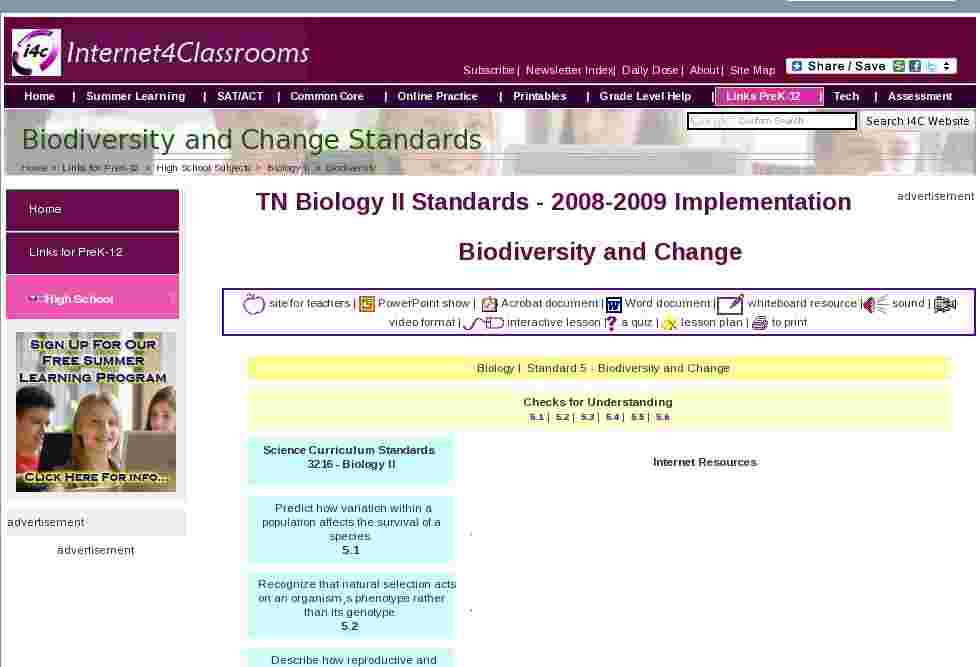TN Biology II Standards - 2008-2009 Implementation
Biodiversity and Change
site for teachers |
PowerPoint show |
Acrobat document |
Word document |
whiteboard resource |
sound |
video format |
interactive lesson |
a quiz |
lesson plan |
to print
Science Curriculum Standards
3216 - Biology II† † †
- The Hardy-Weinberg Equation - If you know the frequency of an allele that causes a trait you can use an equation to make predictions - use this interactive lab to explore the Hardy-Weinberg Equation

- Hardy-Weinberg Equilibrium Model
- Java applets illustrating gene dropping - There are two applets, each contain the same ten pedigrees.

- Population and Evolutionary Genetics - The Hardy-Weinberg Law
- Understanding a Gene Pool - You will make a model gene pool based on an initial assumed population, collect data to test the Hardy-Weinberg principle, compare your data to predictions in a cross-multiplication table, and use a model gene pool to examine the change in allele frequencies caused by harmful genotypes in a given environment.
†
- All in the Family - a PBS activity in which students construct a cladogram
An Introduction to the Principles of Taxonomy
- Animal and Plant Classification - a 20 question Quia quiz
- Animal Classification Jeopardy - a Quia quiz

Carl von Linne and the Linnean System of Nomenclature
- Classify This! - You are challenged to classify groups of animals, finally arriving at a distinction between complete and incomplete metamorphosis. Following the interactive classification you will take a quiz.
- Classifying Animals - When you classify an animal you place it in the group to which it belongs
- Classifying Animals - an overview of the seven taxons from Fact Monster
- Dichotomous Key Activity - print page one, name the creatures, and then follow the links at the bottom of each page of the online key
- Leaf Litter Arthropod Key from Hope College - this key is based on number of legs
- Water Critter Key: Life in a Pond - Pick a critter from the aquatic critter key game. Look at your critter and choose one of the descriptions given. Then, follow the links that you think are correct.
- What is the Key to Classification - explanation of what a key is and how to make one [if you use the links page you will find many dead links]
- Who Wants to be an Animal Classification Millionaire? - a Quia quiz

Search Internet4Classrooms
 Custom Search
Custom Search
- Site Map |
- About Us |
- Teacher Training |
- Make Internet4Classrooms.com your home page. |
- Copyright © 2000-2024 Internet4Classrooms, LLC All rights reserved.
Use of this Web site constitutes acceptance of our Terms of Service and Privacy Policy.
1743397979355663 US 1 desktop not tablet not iPad device-width